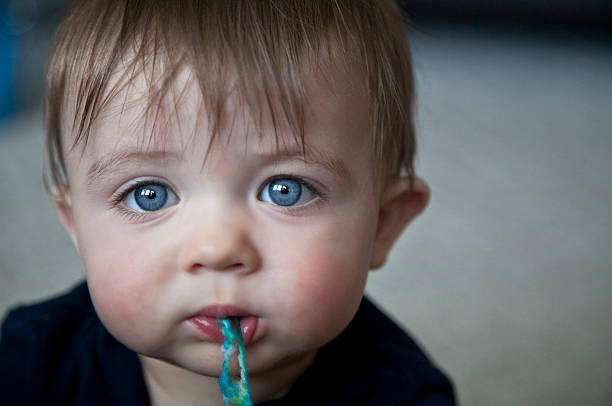Teething fever is a common issue that affects babies and young children during the process of tooth eruption. Teething is a normal developmental stage for children, but it can cause discomfort, pain, and even a low-grade fever. Teething fever is typically defined as a low-grade fever that is associated with teething, and it can cause concern for parents.
The symptoms of teething fever include a low-grade fever, drooling, biting, chewing, irritability, fussiness, and a decreased appetite. The symptoms of teething fever are often mistaken for those of other illnesses, making it difficult for parents to determine the cause of their child’s discomfort. The fever associated with teething can range from 100.4°F to 101°F, and it usually lasts for a short period of time, typically 24 to 48 hours.
In addition to the fever, teething can also cause a variety of other symptoms, such as gum swelling and sensitivity, a decreased appetite, and a general feeling of discomfort. Babies and young children may also have trouble sleeping and may be more irritable and fussy during this time. In some cases, teething can also cause diarrhea, runny nose, and ear pulling, but these symptoms are less common.
Symptoms of Teething Fever
In addition to a low-grade fever, teething fever can also cause a variety of other symptoms in children. These can include:
Irritability and fussiness: Many children become more irritable and fussy when they are teething, and this can be exacerbated by the presence of a fever.
Loss of appetite: Children may not want to eat or drink as much when they are teething, which can make it difficult to keep their fever under control.
Difficulty sleeping: Teething pain can make it difficult for children to fall asleep or stay asleep, which can lead to fatigue and irritability.
Drooling: As the teeth push through the gums, children may produce more saliva than usual, which can cause drooling.
Biting and chewing: Children may bite or chew on objects more frequently as they try to soothe their sore gums.
Redness and swelling in the gums: The gums can become red, swollen, and tender as the teeth emerge, which can cause discomfort and make it difficult to eat or drink.
Rash around the mouth: Some children develop a rash around their mouth as a result of drooling during the teething process.
There is no cure for teething fever, but there are several treatments that can help relieve the symptoms and make the process more manageable for parents and children. Some of the most effective treatments include over-the-counter pain relievers, such as ibuprofen or acetaminophen, as well as teething rings and gels. Teething rings and gels can be especially helpful for soothing sore gums and reducing discomfort.
For babies and young children, it is important to avoid the use of over-the-counter pain relievers without first consulting with a pediatrician. In addition, teething gels and liquids should only be used sparingly and with caution, as they may contain ingredients that are harmful to young children.
Treatment for Teething Fever
The best way to treat teething fever is to manage the underlying symptoms and make the child as comfortable as possible. Here are some tips for doing so:
Offer pain relief: Over-the-counter pain relievers, such as ibuprofen or acetaminophen, can help to reduce fever and relieve discomfort. Be sure to follow the dosing instructions on the packaging, and never give aspirin to a child under 18 years of age.
Offer cool, soft foods: Cold foods, such as applesauce or yogurt, can help to soothe sore gums. Avoid giving hard or crunchy foods, as they can irritate the gums even more.
Offer a teething toy: A teething toy can provide relief for sore gums, and it can be chilled in the refrigerator for added comfort.
Keep the child hydrated: Make sure the child is drinking enough fluids, as dehydration can make a fever worse.
Another effective treatment for teething fever is to provide additional comfort and support for your child during this time. This can include offering extra cuddles and reassurance, as well as providing soft and cool objects for your child to chew on. You can also offer your child a cool washcloth or a cold teething ring to help soothe their gums.
In severe cases, teething fever may need to be treated with antibiotics or other medications. This is typically only necessary if the fever is accompanied by other symptoms, such as a severe headache, skin rashes, or severe pain. If you are concerned about your child’s symptoms, it is important to consult with a pediatrician or healthcare provider to determine the best course of action.
Conclusion
Teething fever is a common issue that affects many babies and young children during the process of tooth eruption. While the symptoms of teething fever can be concerning for parents, they are typically mild and can be effectively treated with over-the-counter pain relievers, teething rings, and gels, as well as additional comfort and support for your child. If you are concerned about your child’s symptoms, it is important to consult with a pediatrician or healthcare provider to determine the best course of action. With the right treatment and care, teething fever can be managed, and your child can make a full recovery.

 Home
Home Health
Health Diet & Nutrition
Diet & Nutrition Living Well
Living Well More
More












